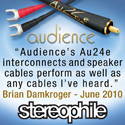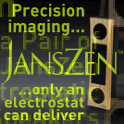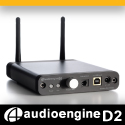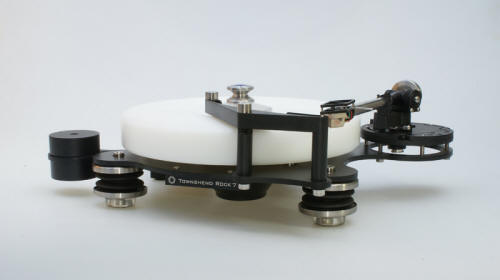|
|
You are reading the older HTML site
Positive Feedback ISSUE 62
townshend audio Rock 7 Turntable as reviewed by Mike Wechsberg
I gave the Townshend Rock 7 Turntable a PFO Writer's Choice award last year (see Issue 58) and promised a full review soon after, but that was to be delayed by life's trials and tribulations (I've been using the Townshend turntable together with a Helius Omega tonearm as my reference for well over a year now.). So before anything else happens, I'm going to write this now to bring this remarkable audio component to your attention… assuming of course that you haven't already heard about it as it has received some well-deserved raves. Townshend Engineering has an eclectic line of products springing from the brilliant mind of audio designer Max Townshend. The UK company is probably best known in the USA for the Seismic Sink isolation platforms that use air bladders to effectively separate external vibrations from your components. They also produce a preamp, supertweeter, loudspeakers, cables, and other various items, but I believe the Rock 7 Turntable is their most significant product, as it does the more to remove veils and haze to get the most out of the record grooves we cherish. Although the design contains numerous engineering innovations, they are executed in a simple and ingenious way that does not require enormously expensive materials or manufacturing processes, like other heroic turntable designs we read about and lust after. The Townshend is able to scratch the surface of state-of-the-art without costing an arm and a leg (just $3200 in basic form) and is, therefore, accessible to many music lovers. It's not easy to mistake the Townshend turntable with other turntables, as it has a most unusual look. The design has evolved since the 1980's when the first Rock turntable hit the market. Townshend is all about eliminating vibration and resonances that get in the way of the music via the playback process. How does it do this? First, the Rock 7 has no conventional base or plinth, which in other designs, add cost and sometimes degrade performance. The substantial polyethylene plastic platter and the bearing are held on a steel sub-chassis that is supported by three spring/bellows feet. These feet are tuned to isolate the platter from shocks and vibrations down to a very low frequency (3Hz). The height of the feet can be adjusted independently, and a heavy weight is suspended off the side of the sub-chassis to counterbalance the arm and level the entire turntable. The 24-pole 250-RPM synchronous motor with its two-speed (33 and 45 rpm) drive pulley, IEC power socket, and on/off switch, is contained in a separate box that is connected to the main turntable assembly by an elastic belt. This configuration ensures high isolation between the platter and the motor. The motor box also has isolation feet to address vibrations.
The polyethylene platter is made of a material very similar to an LP… and for a very specific reason. This is explained best on the Townshend web site: "The polyethylene platter ensures a virtually perfect mechanical impedance match between the record and the platter surface. This means that the sound wave, which radiates from the stylus-tip whilst playing, is transferred without reflection into the bulk of the material, where it is naturally absorbed in the slightly lossy bulk of the platter. This mechanical damping process is crucial for clear reproduction as early reflections at this point, due to (very common) mechanical impedance mismatches, cause strong early reflections of the musical information coming off the disc. This, of course, is a form of distortion and significantly blurs the sound."
The bearing is another special item. It consists of a unique one-piece precision-ground steel shaft with a hardened bottom-end resting on a steel ball. The ball and shaft are lubricated with state-of-the-art synthetic oil developed for Formula 1 racecars. This sits in the bottom of a brass bearing assembly that is fixed to the main chassis. Thus, the bearing is isolated from the outside world, floating in oil. The bearing shaft extends right through the sub-platter and the main platter to form the spindle for the record. The top of the spindle has a threaded hole for the Rock record clamp. The clamp works with a supplied threaded aluminum disk that goes under the record and is adjustable to accommodate different record thicknesses. The clamp and disk work together to obtain just the right amount of clamping to impedance match the record to the platter (this adjustable aluminum disk function is not addressed in the version of the manual that came with my turntable—when I figured out how to use it correctly it made a significant difference in the sound—much like a small vertical tracking angle adjustment). The most unusual feature of the Rock 7 is how it uses fluid damping to suppress arm/cartridge resonances and spurious cartridge movement. Most audiophiles know they need to match the cartridge compliance with the effective mass of the arm, or else large low frequency resonances are excited that can affect the sound or, in some cases, can even overload the phono preamp, or even cause the cartridge to mistrack. Even in a compatible arm/cartridge combination, these resonances are still there, just lower in amplitude. With my previous turntable/arm I made mistakes more than once by picking the wrong cartridge for the arm. In these cases I could actually watch the speaker woofers from across the room making large excursions independent of the music. Record warps and center-hole misalignments also cause the cartridge to move inconsistently with the music at low frequencies. These problems smear the sound and obscure detail and focus, yet they are ubiquitous in almost all turntable setups. Some turntable designers employ heroic (and often extremely expensive) efforts to reduce the occurrence of these perturbations. Several other turntables and arms use damping at the rear of the arm where a small trough or well containing silicone damping fluid is located. However, with this approach the cartridge perturbations have already affected the sound before they even reach the trough.
The Townshend turntable locates the trough so as to damp the perturbations right at the cartridge head shell. A substantial trough, shaped in the arc of the record, and containing viscous damping fluid, is fastened to the sub-chassis and swings directly over the top of the record's surface. Townshend supplies an outrigger assembly that attaches to the tonearm headshell and supports a paddle (just a small aluminum tube) that is immersed in the trough as it travels across the record along with the stylus. The outrigger assembly insures intimate contact between the paddle and the cartridge, and damps the undesirable perturbations right at the headshell, while allowing the cartridge to follow the groove modulations accurately. This eliminates the smearing at the source and gives the sound rock solid imaging and focus—hence the turntable's name. The figure below is from the Townsend web site, and plots the low frequency response of a typical arm/cartridge between 5Hz and 20Hz. The upper plot is without damping and reveals a resonance of about 15dB in amplitude at 8Hz and, an overall increase in spurious (i.e., not part of the music) energy in the measurement band. This plot is probably typical of how your turntable system is working today, no matter how much you spent on the arm or cartridge. The lower plot depicts the response with the fluid damping as implemented in the Rock 7 and shows complete suppression of the resonance. Wow! Even though this is a crude engineering plot, it doesn't take much imagination to appreciate how significant it is to get rid of all that junk between 5Hz and 20Hz while letting the 'real music' pass through unperturbed.
On the Townshend website it describes the trough as an option, but it makes no sense to buy the turntable without it. It makes such a huge difference in the sound; you can play records without using the trough, that after trying this once, you won't want to ever do so again. Max Townshend's ingenious outrigger and trough design is compatible with almost any tonearm. The Rock 7 is supplied without a tonearm, but offers the buyer a choice of arm boards cut for a Rega, SME, Linn, Jelco, or Townshend arm. Custom arm boards are also available, which is what I ordered to accommodate my Helius Omega tonearm. Bob Levi and others have already commented on this outstanding tonearm in other issues of PFO, so I won't go into it specifically in this review, but the sound of the tonearm is linked to the turntable sound, as I am sure you all appreciate. If you can afford the Helius Omega, I recommend it highly. It is fair to say the Townshend turntable is not as easy to set up as other, more conventional designs, but neither is it as complicated as some others dues to its ingeniously simple yet effective design. I enlisted the aid of Dan Meinwald, the US distributor for the Townshend, to assist. Even so, we had several issues during the installation that are probably specific to my configuration. For example, I had some fit problems with the custom arm board that Dan had to fix, and there was a tolerance issue with the extension of the main bearing below the chassis that required some tweaks. We received help directly from the factory in the UK via email which promptly resolved everything. Townshend has a number of optional accessories to help with installation issues (e.g., tonearm counterweights, etc.) so make sure you work with a good dealer. For most users the most complicated setup involves leveling the turntable, which requires sequentially manipulating the counterbalancing weight, as well as adjusting the three spring/feet. After the initial setup I had an issue with the clearance height of the trough over the record when playing some warped LPs, and I had a limit in adjusting cartridge VTA, because of dimensions on the arm board (specific to my tonearm). I also had to rig up something to deal with the power cord dragging the relatively lightweight motor out of position. I'm mentioning these things for completeness, not to raise any concerns. All was well with a little persistence… plus an occasional mild profanity. Before the turntable/tonearm was ready for review, I had to settle on cables. I expected to spend some time trading off between interconnect cables, and I did try probably a dozen different ones covering a price range from a few hundred dollars to a few thousand dollars. Today, I switch between a relatively low cost phono cable from Wywires (very dynamic) and a more expensive interconnect from Kubala-Sosna (a little warmer and smoother) according to mood. In my Rock 7 setup, I think the interconnect choice has more to do with the tonearm and cartridge than it does with the turntable. I was not prepared to spend as much time as I did finding the right power cord to use with the Rock 7's motor. It is vital to find the right power cord for your Rock 7 turntable if you want to experience the brilliant sound it is capable of, because, for reasons I don't understand, the sound varied radically with choice of power cord. Some multi-kilobuck power cords I had in for review made LPs sound terrible (lack of focus, flaccid bass, grunge, etc.). Yet, in other positions in my system these same power cords made wonderful music. I ended up using a quite inexpensive PS Audio power cord with the Rock 7, because it resulted in very impressive sound. I eventually settled on a Kubala-Sosna Emotion power cord that allowed the magic of the turntable to shine through without compromise. However, the Kubala-Sosna cord may, or may not be the right one for you. I haven't noticed anyone else commenting on the Rock 7 mentioning this odd setup quirk (though Dan Meinwald alerted me to this phenomenon when I first started using the turntable), which puzzles me. If you decide to buy the Townshend, please work with a dealer to try out a range of cords from different manufacturers before you finalize the setup. Alternatively, Townshend has recently come out with an optional DC motor for the Rock 7 which comes with a substantial regulated power supply. I heard this configuration at Dan Meinwald's home recently, and it worked well with a plain old hardware store power cord. Since the DC motor/power supply adds $1900 to the price of the turntable, one has to choose between the cost of the motor vs. the cost of a potentially expensive power cord. The procedure to play a record on the Rock 7 is that you first adjust the aluminum disk that fits on the spindle for record thickness. Depending on what you are playing, you may be able to ignore this step if the record thickness does not change within your collection (which is highly unlikely!). You will quickly learn the right setting, and thankfully this adjustment is not fussy. Next, place the record on the spindle and twist on the clamp until it is slightly tight. Swing the trough over the record until it clicks in place, and then move the arm and cartridge over the lead-in grooves. It is still pretty easy to see the stylus position, despite the presence of the outrigger assembly. You are now ready to play. When the side is over, merely lift the arm/cartridge and outrigger assembly and swing it over to its rest. You can adjust the armrest such that the paddle is over the pivot point of the trough to catch any residual liquid that might drop off the paddle. Once the arm is in its rest you can swing the trough away and remove the record. How does the Rock 7 sound? For large-scale orchestral music, it redefined what I thought an orchestra could sound like on my stereo system, and on other types of music, it brought me closer to the performers than I had ever experienced prior. Moreover, this feeling of discovery persisted every time I put on a different record. Each experience was a new one. The Rock 7 had the most profound impact on the sound of reproduced music in my home than did any other equipment change I had ever made, including changing speakers! In my first few months with the Rock 7, I used a Dynavector Karat moving coil cartridge carried over from my previous reference; a tricked out VPI Scout turntable with JMW arm. Switching to the Townshend/Helius combination provided a solidity and stability to the sound that was previously unmatched. Bass was as powerful and distinct as any I had ever heard from my speakers. Clarity was improved on everything I played. Dynamic range was tremendous and transients snapped. Timing and rhythmic drive just seemed right. Individual instrument lines were easy to follow, even in congested passages. New levels of nuance and detail were revealed that I had only heard in some of the best and most expensive systems. Images were broad and distinct, and the soundstage was as wide as the recording allowed. It was possible to become completely immersed in the music on vocals and small jazz pieces. And it was impossible to ignore the music when the Rock 7 was playing, even when the volume was turned down. A few months after installing the Rock 7 in my system I took the plunge and purchased a London Reference cartridge ($5250 last time I checked), one of the world's best cartridges. See Bob Levi's review in PFO Issue 48. The London's design is unique in that it does not employ a cantilever to support the stylus. Eliminating the cantilever also eliminates any resonances that might get between the record groove and the cartridge coils (London calls this "cantilever haze”). This approach complements the Rock 7's design objective to eliminate resonances, and other perturbations, right at the source. , Based on these consistent design objectives, I believe the Rock 7 turntable and London Reference cartridge is an ideal match. I know several other audiophiles in my area who have purchased just this combination. Music with the London cartridge on the Rock 7 was much more dramatic and even closer to the master tape compared to using the Dynavector cartridge (much cheaper than the London so don't take this as a criticism of the Dynavector). With the London cartridge, music leapt out of the speakers, depth was even deeper, and the edges of the soundstage were filled out more completely. The sound was balanced better across the frequency range with a richer midrange and more delicate and nuanced high end. Bass was even more powerful, with extraordinary definition. The turntable combo got completely out of the way of music, and allowed me to hear every detail. The rhythm and pace were wonderful, driving the music ever forward. As much as I enjoyed exploring my LP collection with the Dynavector cartridge, it was even more rewarding to rehear old favorites with the London cartridge. The emotional connection between the players and me was gripping. I have little negative to say about the Rock 7 turntable. It is not the prettiest turntable in the world, and it only comes in basic black. It doesn't use exotic materials, or huge and heavy machined parts like some other designs that might impress your friends. The set up is a little more complicated than most, and it's important to keep checking that the turntable is level. The presence of the viscous fluid means it's a little more involved to move the turntable around (i.e., the damping fluid should be removed for long range moves or shipping), but this isn't necessary very often. I'm simply at a loss to identify any sonic shortcomings. I've heard one $25,000 turntable/arm that sounded quieter, but it was lifeless. Another $20,000 table I'm familiar with, and using the same arm and cartridge, sounds about the same in terms of impact, involvement and sonic accuracy, but no better. The astonishing thing is that the Rock 7 costs only $3200 (not including arm), yet it competes with designs costing much, much more. My strong advice is to audition the Rock 7 before considering spending more than $3200. Although I use the turntable with a fairly expensive arm (the Helius Omega costs about $3100) you should be able to achieve close to the same performance with a less expensive arm due to the benefits provided by the trough; damping vibrations so near the source makes life easier for the tonearm. If you are fortunate to have the extra money, spend it on a better power cord, or on the DC motor option. If you really want to unlock the magic contained in your LP grooves, I strongly encourage you to try out the Townshend Rock 7 turntable. Michael Wechsberg
Townshend Rock 7 Turntable
Townshend Audio U.S. Distributor
EAR-USA/Sound Advice
|













